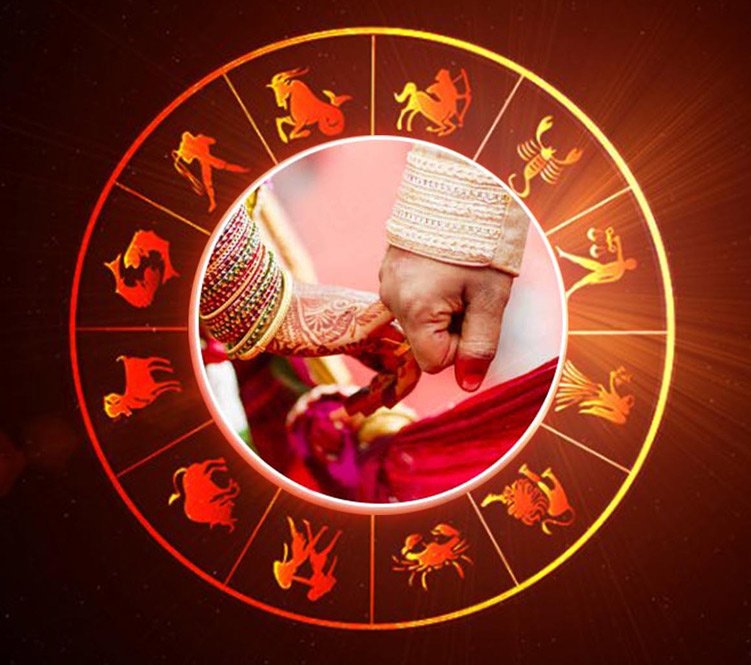Marriage astrology is a specialized branch of astrology that focuses on relationships, compatibility, and the dynamics of marriage. It uses the principles of astrology to understand how two individuals’ birth charts align, their emotional and spiritual compatibility, and how planetary influences might affect their relationship.
Here are some key elements of marriage astrology:
1. Compatibility Analysis (Synastry):
Synastry is the comparison of the birth charts of two people to assess how well their energies align. By examining aspects between their planets (such as the Sun, Moon, Venus, and Mars), astrologers can determine how each person might influence the other. For instance:
- Sun Signs: The Sun represents a person’s core identity. While many people focus on Sun sign compatibility (e.g., Aries and Leo), astrologers often look deeper at aspects between the planets in each person’s chart.
- Moon Signs: The Moon governs emotions, intuition, and inner needs. Compatibility of Moon signs is crucial because it shows how two people emotionally relate to one another.
- Venus and Mars: Venus represents love and attraction, while Mars represents desire and passion. Their aspects can reveal the romantic and physical dynamics between two people.
- Ascendant/Descendant Axis: The Ascendant (Rising sign) shows how a person presents themselves to the world, and the Descendant shows what kind of partner they are likely to attract. A harmonious Ascendant-Descendant relationship can indicate a strong match.

2. Navamsa Chart (D9 Chart) in Vedic Astrology:
In Vedic astrology, the Navamsa chart is particularly important in marriage analysis. It’s considered the “marriage chart” and reveals deeper insights into a person’s marital life, including the nature of the spouse, the longevity of marriage, and any challenges the person might face in their relationships. The 7th house (the house of marriage) in both the natal and Navamsa chart is a key focus.
3. The 7th House:
The 7th house in astrology is the house of partnerships, marriage, and long-term relationships. The sign on the cusp of the 7th house, along with any planets placed within it, can provide insights into the nature of the individual’s marriage and what kind of partner they are likely to attract. Benefic planets (like Venus, Jupiter) in the 7th house can indicate harmonious relationships, while malefic planets (like Mars, Saturn) can suggest challenges in relationships.
4. Timing of Marriage (Muhurta):
In electional astrology, astrologers can choose an auspicious time for marriage, known as “muhurta.” This is based on the alignment of planets, especially the Moon’s position, to ensure that the time is favorable for the couple’s long-term happiness and stability. In Vedic astrology, certain planetary combinations and the positions of planets like Venus and Jupiter can indicate an ideal time for marriage.
5. Dasha and Transits:
In Vedic astrology, the Dasha system is used to determine the timing of major events in a person’s life, including marriage. The period of Venus Dasha is often seen as an auspicious time for marriage, as Venus is the planet of love and relationships.
- Transits (planetary movements in the sky) are also important for understanding when major changes or opportunities may arise in one’s marriage. For example, a favorable transit of Jupiter (planet of expansion) over the 7th house can indicate a period of growth and happiness in relationships.
6. Marriage Compatibility Factors:
Some additional factors that are often examined in marriage astrology include:
- Manglik Dosh (Mangal Dosha): In Vedic astrology, if Mars is placed in certain positions in a person’s birth chart (typically the 1st, 4th, 7th, 8th, or 12th house), it is believed to create a “Manglik Dosh,” which is considered inauspicious for marriage. Remedies can be suggested to mitigate its effects.
- Kundli Matching: In Indian astrology, matching the birth charts (Kundli) of the couple is a traditional practice before marriage. The charts are compared on various levels (physical, mental, emotional) to assess overall compatibility. The “Guna Milan” system checks 36 points across factors like health, wealth, emotional stability, and long-term compatibility.
7. Role of Planets and Their Influences:
- Venus: The planet of love, beauty, and relationships. Its placement in the chart plays a significant role in romantic relationships and marriage.
- Jupiter: Known as the planet of expansion, wisdom, and luck, Jupiter’s position can show the kind of partner a person may attract and whether the marriage will be beneficial and prosperous.
- Saturn: Often seen as a planet of discipline, responsibility, and delay, Saturn’s influence can indicate delays or lessons to be learned in marriage. It can also show how stable and enduring a relationship may be.
8. Astrological Remedies for Marriage Issues:
Astrology also provides remedies for challenges in marriage, including:
- Wearing specific gemstones to strengthen the positive effects of beneficial planets.
- Performing certain rituals or mantras to reduce malefic influences (e.g., Saturn, Mars).
- Engaging in charitable acts, especially related to the planet causing issues (for example, donating to the poor during a difficult Venus Dasha).
Conclusion:
Marriage astrology is a deeply insightful way to analyze the compatibility between two individuals, understand their potential challenges, and even find the most auspicious times for marriage. While astrology can provide guidance, the success of a marriage depends on mutual understanding, respect, and effort between the partners.
Would you like to know more about a specific aspect of marriage astrology or dive into compatibility between two individuals based on their birth charts?


